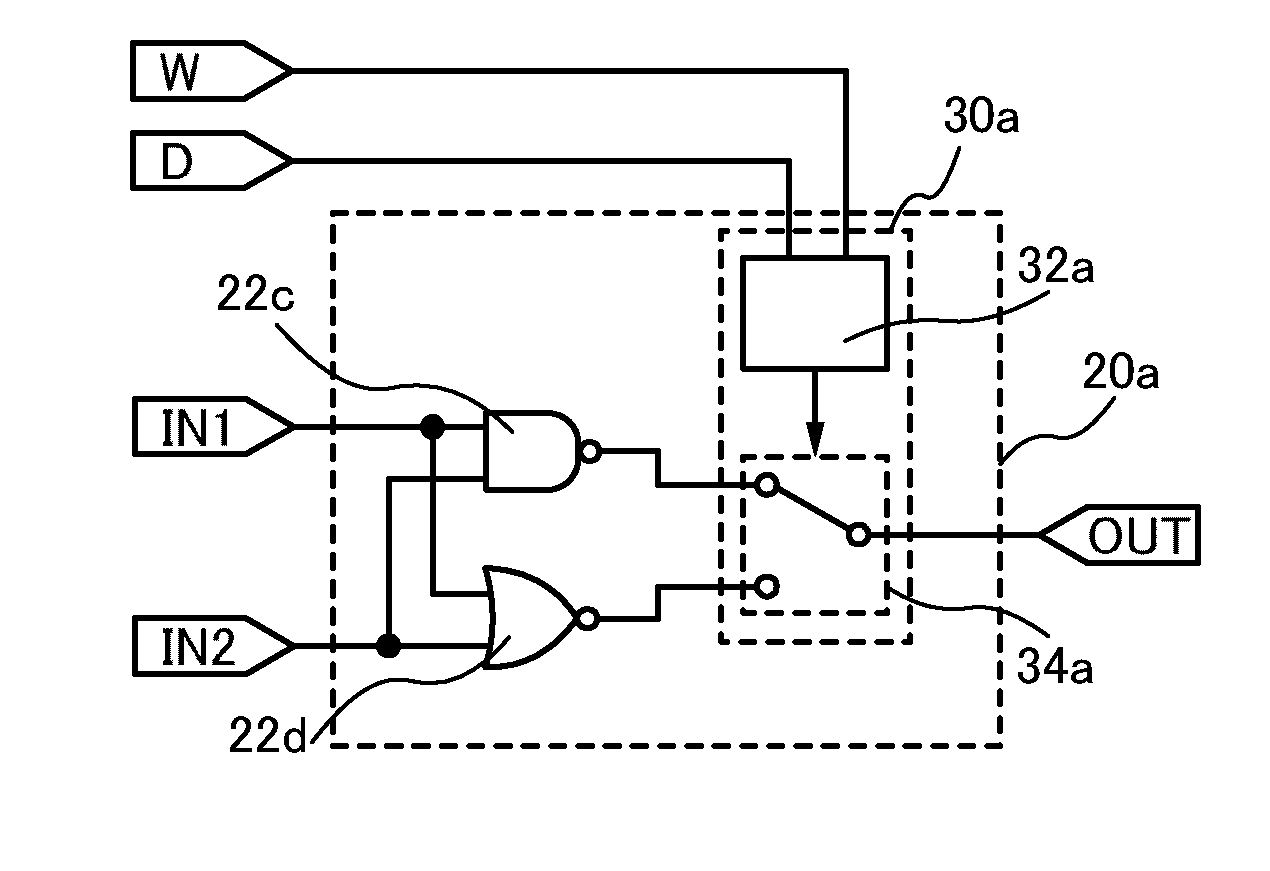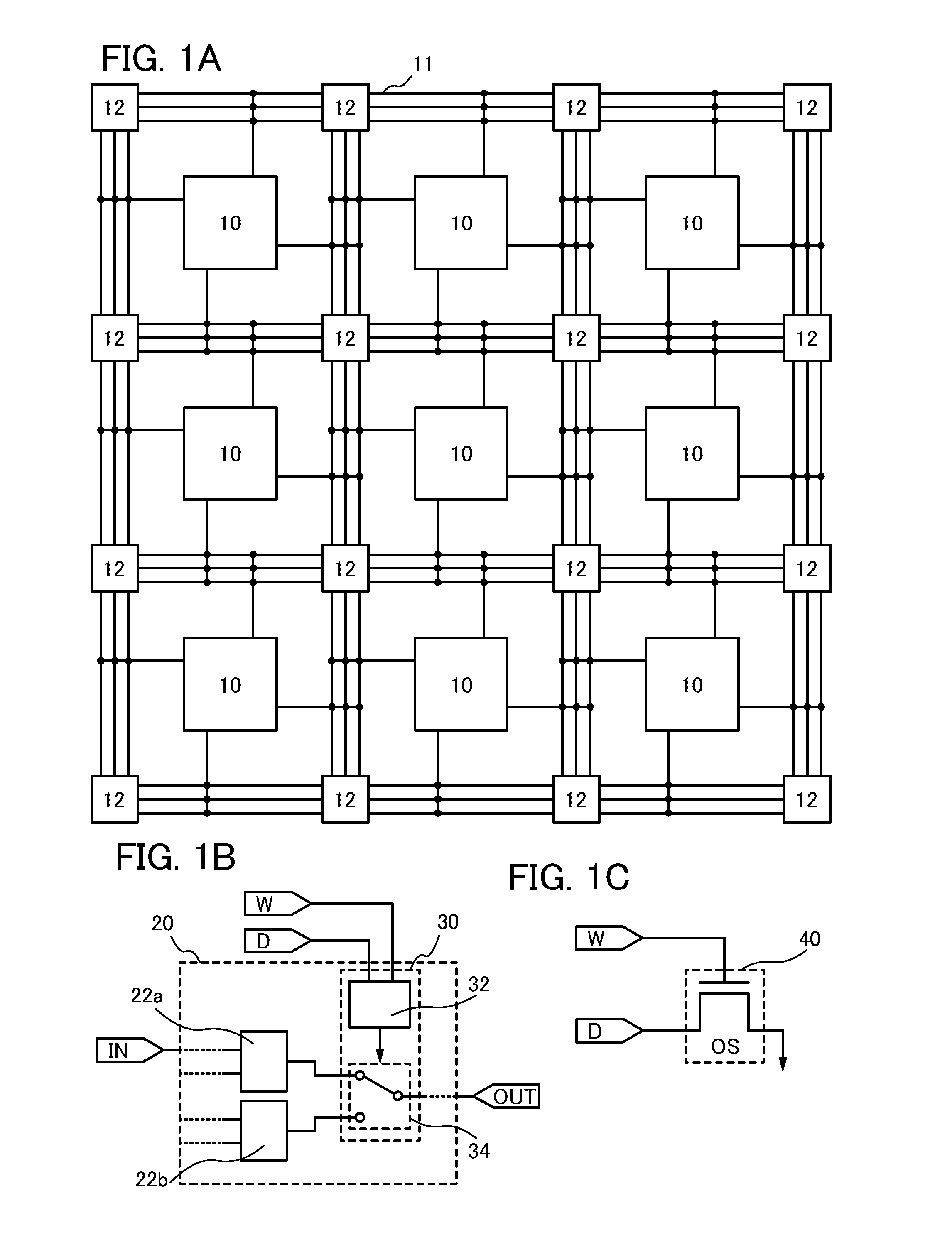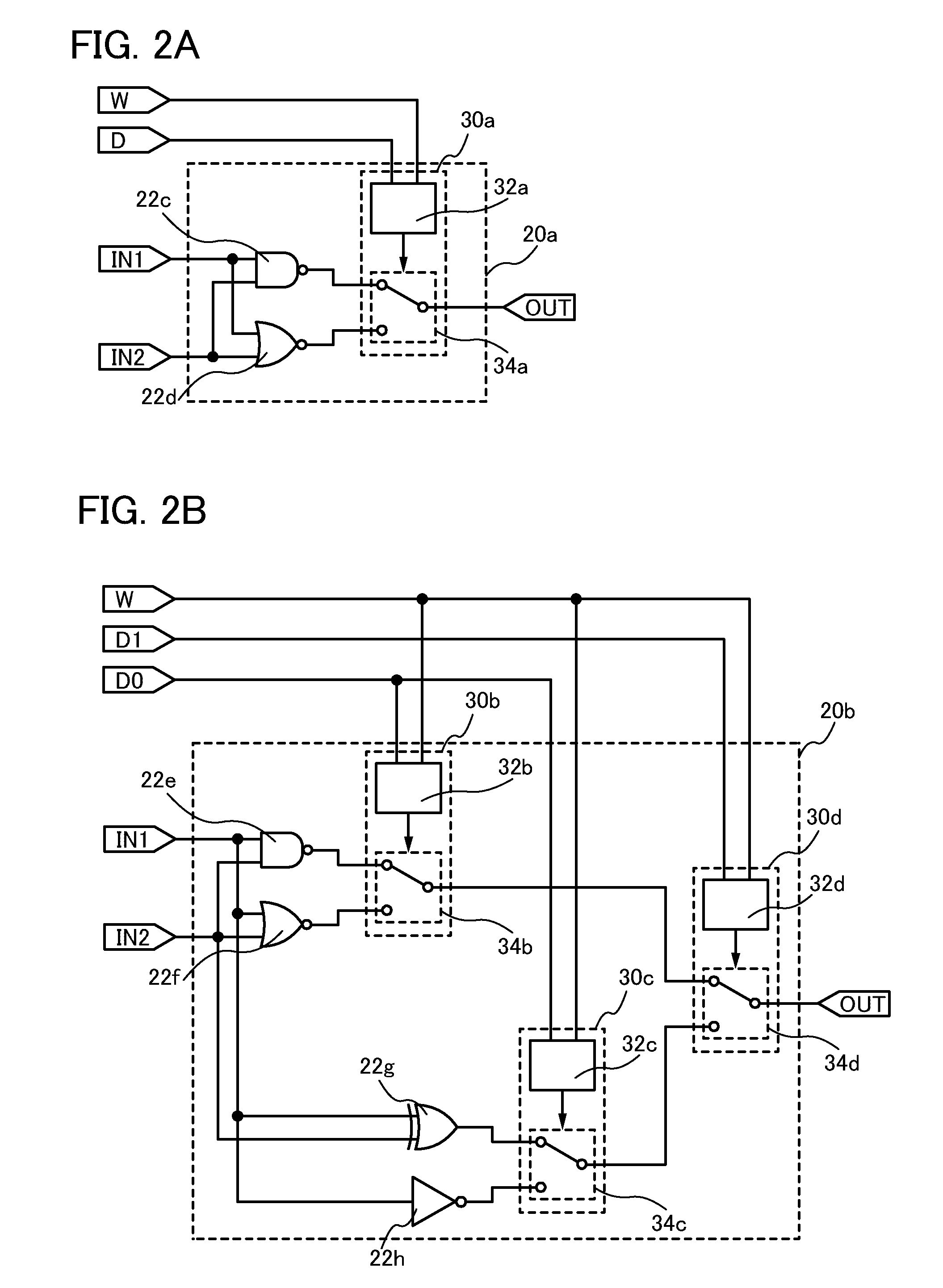Programmable logic device
- Summary
- Abstract
- Description
- Claims
- Application Information
AI Technical Summary
Benefits of technology
Problems solved by technology
Method used
Image
Examples
embodiment 1
[0056]In this embodiment, a circuit structure of a programmable logic device according to an embodiment of the disclosed invention will be described with reference to FIGS. 1A to 1C, FIGS. 2A and 2B, FIGS. 3A to 3D, FIGS. 4A to 4C, and FIGS. 5A to 5C.
[0057]FIG. 1A illustrates the structure of the programmable logic device according to an embodiment of the disclosed invention. The programmable logic device includes a plurality of logic blocks 10 electrically connected through a plurality of wirings 11. For example, as illustrated in FIG. 1A, the logic blocks 10 are arranged in matrix, and the wirings 11 are provided between the logic blocks 10 to extend in the row direction and in the column direction. Further, a switch matrix 12 for switching connection of the wirings 11 is provided at an intersection of the wirings 11 extending in the row direction and the wirings 11 extending in the column direction. Note that the logic blocks 10 are not necessarily arranged in matrix with interva...
embodiment 2
[0102]In this embodiment, a method for manufacturing the programmable switch of the programmable logic device in Embodiment 1 will be described with reference to FIGS. 6A to 6D, FIGS. 7A and 7B, FIGS. 8A to 8C, and FIGS. 9A and 9B. A method for manufacturing the programmable switch including the transistor 110, the transistor 112, and the transistor 114, which is illustrated in FIG. 3A, will be described as an example. Note that in FIGS. 6A to 6D, FIGS. 7A and 7B, FIGS. 8A to 8C, and FIGS. 9A and 9B, a cross-sectional view taken along line A-B corresponds to a cross-sectional view of a region where the transistor 110 including an oxide semiconductor film, the n-channel transistor 112, and the p-channel transistor 114 are formed, and a cross-sectional view taken along line C-D corresponds to a cross-sectional view of the node FG at which the one of the source electrode and the drain electrode of the transistor 110 including an oxide semiconductor layer is connected to the gate electr...
embodiment 3
[0251]In this embodiment, the field-effect mobility of the transistor including an oxide semiconductor film, which is described in the above embodiments, is theoretically calculated, and the transistor characteristics are calculated from the field-effect mobility.
[0252]The actually measured field-effect mobility of an insulated gate transistor can be lower than its ideal mobility because of a variety of reasons; this phenomenon occurs not only in the case of using an oxide semiconductor. One of the reasons that reduce the mobility is a defect inside a semiconductor or a defect at an interface between the semiconductor and an insulating film. When a Levinson model is used, the field-effect mobility on the assumption that no defect exists inside the semiconductor can be calculated theoretically.
[0253]Assuming that the ideal mobility and the measured field-effect mobility of a semiconductor are μ0 and μ, respectively, and a potential barrier (such as a grain boundary) exists in the sem...
PUM
 Login to View More
Login to View More Abstract
Description
Claims
Application Information
 Login to View More
Login to View More - R&D
- Intellectual Property
- Life Sciences
- Materials
- Tech Scout
- Unparalleled Data Quality
- Higher Quality Content
- 60% Fewer Hallucinations
Browse by: Latest US Patents, China's latest patents, Technical Efficacy Thesaurus, Application Domain, Technology Topic, Popular Technical Reports.
© 2025 PatSnap. All rights reserved.Legal|Privacy policy|Modern Slavery Act Transparency Statement|Sitemap|About US| Contact US: help@patsnap.com



